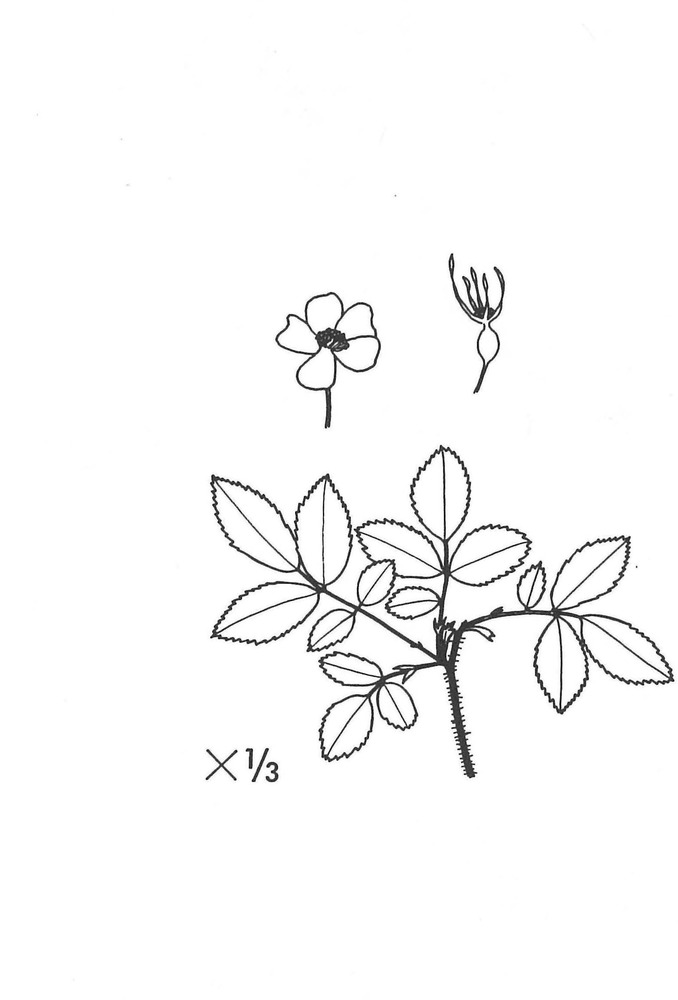| Rosa acicularis Lindl. | |||
| |||
| Family | Rosaceae — APG family: Rosaceae | ||
| Description | Small shrub; leaflets odd-pinnate, with 3-7 opaque, simply serrate leaflets, with puberulent and often glandular rachis, glabrous above, puberulent, or (in var. Sayiana Erlans.) glabrate beneath; stem and branches bristly and acicular-prickly; flowers solitary, 4-6 cm in diameter; sepals erect in fruit, glandular on back; hips subglobose (var. Bourgeauiana Crép.) or, rarely, ellipsoid or pyriform, contracted to neck below sepals. | ||
| Ecology | Woods, heaths, tundra bogs, thickets; in McKinley Park to about 1,100 meters. Described from Siberia. | ||
| Taxonomy notes | The pedicels are mostly glabrous, as in most American specimens, but in central Alaska and the Yukon, specimens with glandular pedicels occur, as in the majority of Eurasiatic specimens. | ||
| Uses | The hips are good for jam, jelly, syrup, and marmalade, and are rich in vitamin C. |
This is a digital representation of Eric Hultén’s ‘Flora of Alaska and Neighboring Territories: A Manual of the Vascular Plants’, which was published by Stanford University Press in 1968. The book was digitized by C. Webb (at UAMN) as part of the Flora of Alaska project, with funding by the US NSF (Grant 1759964 to Ickert-Bond & Webb), and with permission of Stanford University Press. Data and images © 1968 Board of Trustees of the Leland Stanford Jr. Univ. Usage licence: Creative Commons BY-NC-SA 4.0. NB: You may find OCR errors; please refer to the hard-copy if in doubt.
